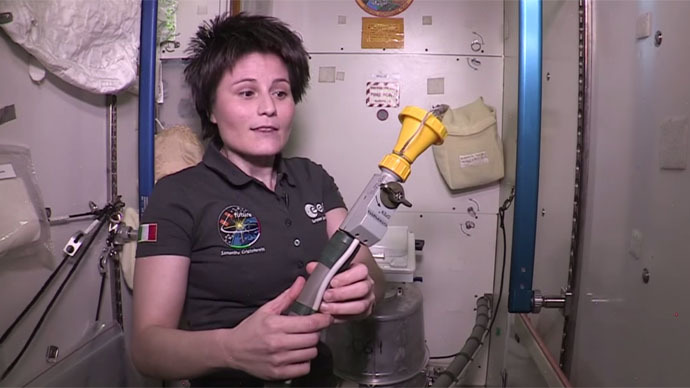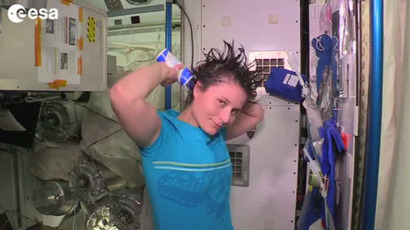Space break: How astronauts relieve themselves aboard ISS (VIDEO)

Italian astronaut Samantha Cristoforetti sheds some light on one of the more mysterious aspects of space travel: How do astronauts answer the call of nature aboard the International Space Station in zero-gravity conditions?
READ MORE: How do you shower on ISS? Astronaut's guide to bathing in orbit (VIDEO)
Inside the ISS toilet cabin, Cristoforetti explains the two-step
process for going to the bathroom. Taking a pee demands the use
of a rubber hose, which contains a switch that activates a
suction to collect the urine.
Such a device is essential aboard the ISS, where anything and
everything floats in weightless conditions.
Answering that all-important question about living aboard the @Space_Stationhttps://t.co/SgAEbzzA1n
— ESA (@esa) May 5, 2015
The liquid waste is then delivered to what is called the urine processing assembly (UPA), which is situated in the floor of the bathroom. Cristoforetti explains this is the first step in recycling the urine, which is eventually turned into potable water.
The process for taking a dump works on essentially the same principle, except that the user must balance himself or herself somewhat precariously over the receptacle, which is much smaller in size than the average toilet down on earth.
Here, a suction device is also used to collect and store the waste.
Cristoforetti explained that the storage tank is changed once every 10 days for a crew of three.













